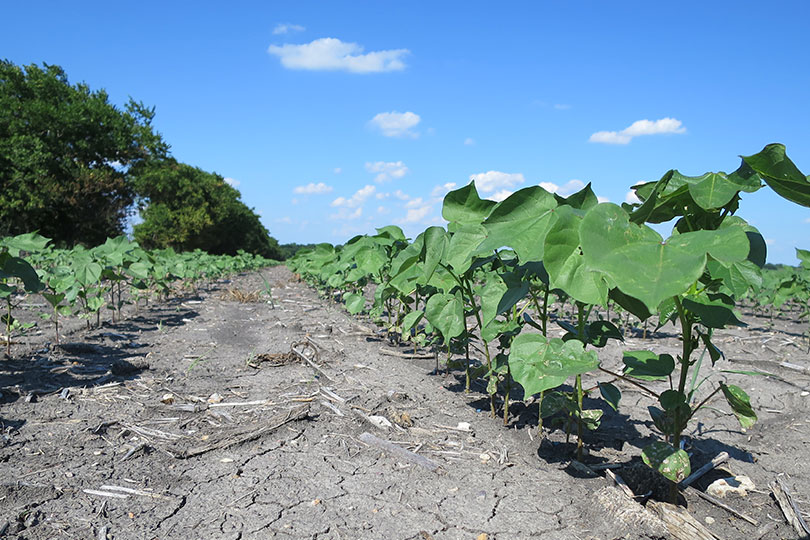By Jennifer Whitlock
Field Editor
When the U.S. Environmental Protection Agency (EPA) approved or extended registration on three dicamba products last fall, the agency also increased control measures like buffer zones to reduce off-site movement of the product, commonly called dicamba drift.
Under the new registrations, the downwind in-field spray drift buffer requirement increased to 240 feet between the last treated row of a field and the closest downwind field edge in the direction in which the wind is blowing. The buffer may be reduced to 110 feet with the use of a qualified hooded sprayer.
The following areas may be included in the buffer distance calculation when directly adjacent to the treated field edges, according to EPA:
- Roads, paved or gravel surfaces, mowed grassy areas adjacent to field, and areas of bare ground from recent plowing or grading that are contiguous with the treated field.
- Agricultural fields that have been prepared for planting.
- Planted agricultural fields containing corn, dicamba-tolerant (DT) cotton, DT soybeans, sorghum, proso millet, small grains, sugarcane and other crops approved for post-emergent dicamba use. If the applicator intends to include such crops as DT cotton and/or DT soybeans in the buffer distance calculation, the applicator must confirm the crops are in fact dicamba-tolerant and not conventional cotton or soybeans.
- Areas covered by the footprint of a building, shade house, silo, feed crib, or other man-made structure with walls and/or a roof.
For areas with endangered species concerns, the downwind buffer was expanded to 310 feet downwind and a 57-foot in-field omnidirectional buffer. The buffer may be reduced to 240 feet downwind using a qualified hooded sprayer in dicamba-tolerant soybean crops only. The 57-foot omnidirectional in-field buffer remains in place with or without use of a hooded sprayer.
Counties with listed species have tighter parameters for calculating buffers. Only these may be included:
- Roads, paved or gravel surfaces, mowed grassy areas adjacent to field, and areas of bare ground from recent plowing or grading that are contiguous with the treated field.
- Planted agricultural fields containing DT plantings of cotton and soybeans.
- Areas covered by the footprint of a building, silo or other manmade structure with walls and/or a roof.
In a memo supporting the registration decision, EPA said it completed species-specific Endangered Species Act (ESA) effects determinations for dicamba used in cotton and soybeans prior to issuing the latest registrations. The agency found no discernable effects to threatened and endangered plants and animals on the federal endangered species list.
In Texas, there are 104 federally listed endangered or threatened plants and animals found in 10 Pesticide Use Limitation Areas (PULAs) across the state.
To verify if a particular area is subject to the 310-foot downwind in-field and 57-foot omnidirectional in-field buffer restrictions, applicators must check EPA’s Bulletins Live! Two prior to making an application.
Once the user has selected the PULA in which he or she intends to apply dicamba and selected the product’s active ingredients, an Endangered Species Protection Bulletin will be created with all relevant information. The bulletin may be printed or saved as a digital document.
EPA has more answers to frequently asked dicamba-related questions here. The full docket of EPA’s dicamba-related documents, including registration notices and labels for each of the three approved dicamba products, is available here.

